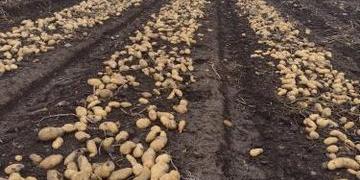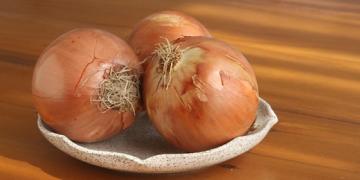Colombia (Boyacá): Native Potato Biomuseum rescues nearly 60 types of native potatoes
Farmers and young people recovered nearly 60 types of native potatoes in a living museum that transformed the community and local tourism.

The Native Potato Biomuseum, located in the municipality of Ventaquemada, Boyacá, has established itself as a national and international benchmark for preserving the diversity of this tuber. In fact, it now surprises foreign visitors with varieties unknown elsewhere in the world and revitalizes the connection between the Colombian countryside and new generations.
This was revealed in a news report published by El Tiempo , a media outlet that accessed the Biomuseo facilities, where farmers and young people returned nearly 60 native potato varieties to the land, many of them threatened with extinction.
Judy Briceño, co-founder of the space, told the media that "there are potatoes that are now more resistant to disease," so the collective effort allowed some varieties, previously relegated to oblivion by the expansion of agribusiness and market standardization, to be rescued both in local production and in the community’s memory.
And although knowledge about native potatoes produced in Colombia is growing, and new research includes more fully native and indigenous species in the country, according to figures from Agrosavia, Colombia has around 2,900 potato varieties in its national inventory, but fewer than 160 varieties remain alive in the field, the media reported.
Most of these are grown in small rural areas in departments such as Boyacá and Nariño, while thousands more have disappeared due to the industry’s preference for more uniform, resilient, and profitable potatoes, such as R12, developed to optimize production and large-scale sales. This trend has displaced traditional varieties, despite their unique flavors, shapes, and colors, which are part of the heritage of the Andean peoples.
The emergence of the Biomuseo, created during the pandemic and nourished by the work of up to five generations of family members, transformed a forgotten farm into a living museum.
The founders established alliances with universities and research centers, as well as with rural women, youth, and peasant organizations. “The challenge was to believe when no one else believed,” said Judy Briceño, who highlighted the resilience in the face of adverse policies and a lack of resources.
In addition to preserving seeds, the Biomuseo developed a fair trade model with chefs and producers to raise the price of a sack of native potatoes up to five times higher than the traditional market.
In Torca, Boyacá, there is a Native Potato Biomuseum, which showcases the Colombian wealth of this tuber - credit tesorosnativos/Instagram"You provide the land and fertilizer, we guarantee the sale," they told farmers, encouraging planting through fair prices and stable conditions. In Briceño’s words, behind every bundle "there is effort, investment, and tradition."
What happens in the potato biomuseum
The work goes beyond cultivation. Journalists from the national newspaper reported that the Biomuseo offers workshops, educational tours, artistic experiments with potato pigments, and, above all, a network of more than 50 families dedicated to protecting these species and their stories.
The list of rescued potato varieties includes iconic names such as Andean, Blackberry, Pink Alca, Quincha, Balvanera, Flag, Criolla Manzana, Bull’s Blood, Colombian Potato, Ratona, and Panqueba.
Visitors from countries such as the Netherlands, France, Germany, and Spain expressed surprise at the range of tubers that don’t exist in their countries of origin.
"We consider ourselves potato experts, but these varieties don’t exist in our countries," several foreigners remarked after visiting the Biomuseo. Some, fascinated, bought watercolors made from natural pigments from native potatoes, for example.
For its promoters, the project represents more than just a cultural or tourist attraction. It is an act of food sovereignty and an active defense against the disappearance of the country’s agricultural biodiversity. In the words of the Biomuseo custodians: "Without seeds, there is no food, there is no life." Thus, the collective effort not only preserved flavors and knowledge, but also strengthened hope and dignity in the Boyacá countryside, projecting the value of the native potato on the international stage.
Fuente:




